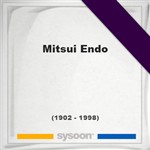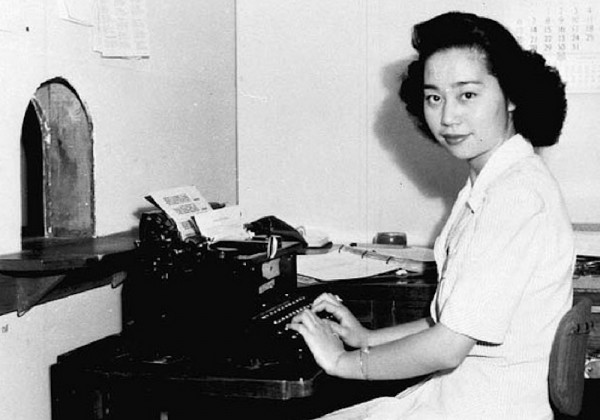
Mitsuye Endo’s strength to keep fighting for the liberties of her fellow citizens, instead of protecting her own, should place her in the same light as the more well-known civil rights leaders. Unlike other cases like that of Yasui, Hirabayashi, and Korematsu, where detainment or restrictions were constitutional-Ex Parte Mitsuye Endo is important because it protects the rights of every American, no matter ancestry, creed, religion, sexuality, or other categories, prohibiting detainment by the government based on those differences.

Instead, her liberty of motion and other innocent activities have been prohibited and conditioned.
Mitsuye endo tsutsumi free#
Under the Constitution she should be free to come and go as she pleases. “An admittedly loyal citizen has been deprived of her liberty for a period of years. Justice Roberts wrote in his concurrence: In 1944, during the EX PARTE MITSUYE ENDO trial, the Supreme Court side with Endo and asserted that American citizens could not be detained without a reason to doubt their loyalty.

Endo refused their offer and remained imprisoned for two more years while her case went up to the Supreme Court in order to speak for the unlawful detention of all loyal Japanese Americans.īy winning her trial, Endo, forced the government to change the laws that were injust to Asian Americans, setting a precedence for future civil rights cases. The government realized that it could not justify her detention as a loyal American and thus offered to release her if she would drop the suit. She was interned at Tule Lake, the camp that was specifically designated for “disloyal” individuals of Japanese decent. Her positionally was especially appealing since she was a Methodist, employed prior to increased anti-Japanese sentiment, did not speak or read Japanese, and her brother was enrolled in U.S Army. After relocation was issued, which became the more urgent issue facing Japanese Americans, Endo accepted the offer to be the plaintiff for the federal case against detainment.

Unlike the majority of her peers, she worked to challenge her termination with the legal guidance of the Japanese American Citizens League. As anti-Japanese sentiment grew following the Pearl Harbor attack, she was fired from her job like thousands of other Japanese-Americans and later sent to a detention camp. This coninsided with active practices to discriminate Japanese Americans access to employment, services, housing, and other necessities granted to Americans considered “white.” She was working for the California Department of Motor Vehicles when World War Two broke out. During her youth and young adult life, Congress passed the Immigration Act of 1924 that halted immigration from Japan. Mitsuye Endo’s integrity in the face of adversity should be an example to other Asian-Americans that they, too, are part of the American fabric and have voices that demand to be heard. citizens were afford the same rights and respect by the government was an important moment in United States history. Mitsuye Endo’s decision to forgo her own freedom and remain in the internment camp to continue the fight against injustice at the Supreme Court level to ensure that all U.S.

In conjunction with direct actions, such as disputing Japanese Americans living in internment camps and forcing them to abide by curfews that other groups did not have, these Asian American litigants also fought to secure a more just union for all. In particular when discussing Asian American activists, litigants, the individuals whose cases gave judges the opportunity to interpret the Constitution are often left out. These moments are at times actions committed by the government and left unchecked until a group or individual stands against it. There have been instances in United States History when injustice was happening to only a few individuals, innocent individuals, yet overlooked by the majority.


 0 kommentar(er)
0 kommentar(er)
